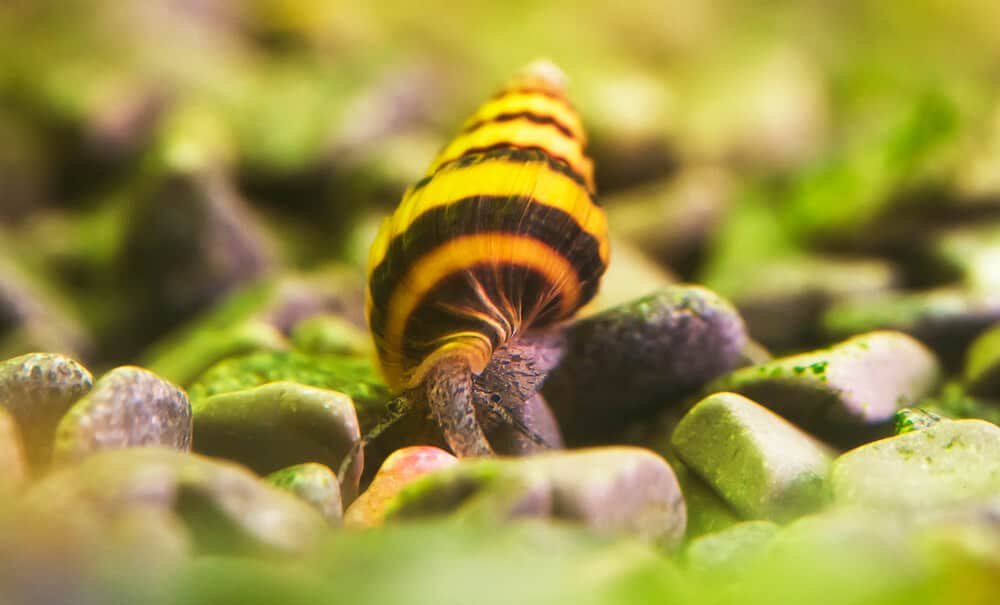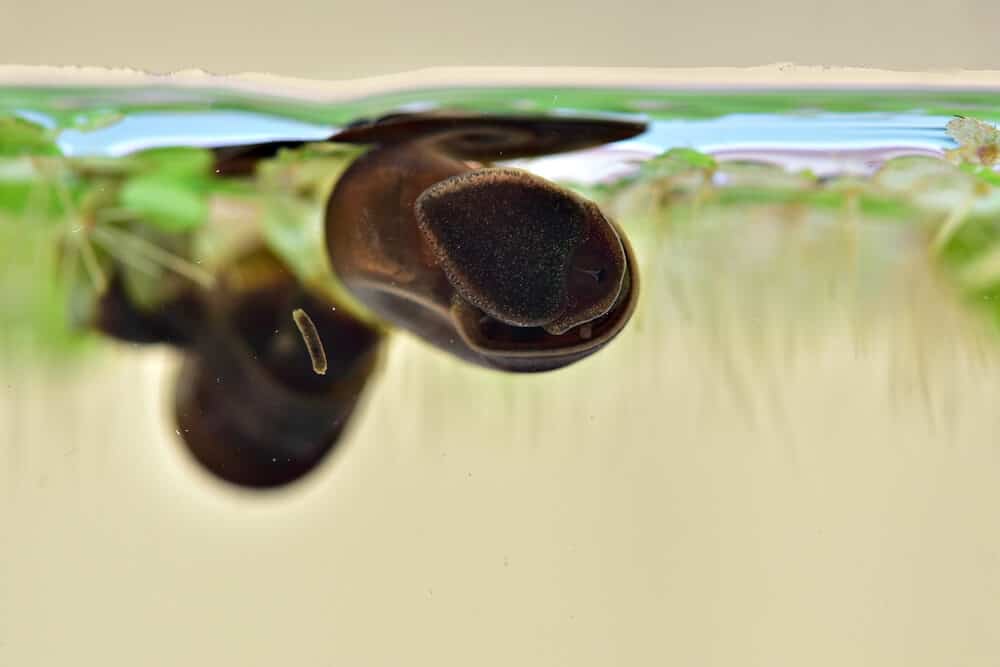Numerous people love keeping bumblebee snails as pets, mainly due to the benefits they bring to an aquarium as well as their stunning shells.
As the name infers, these snails contain a shell that resembles the black and yellow/white stripes that are normally seen on a bumblebee.
If you are interested in keeping these beautiful creatures, here’s what you need to know when feeding them so that you can take care of them better.
Origin and Natural Habitat of Bumblebee Snails
Before you get to know what you need to feed your bumblebee snail, it is essential to gain some information about them.
Firstly, bumblebee snails are a type of sea snail, so you can usually find them in the Red sea, the Indian Ocean, and in other places like Mauritius, Tanzania, Kenya, Aldabia, Chagos, Madagascar, Mozambique, Hawaii, and Florida.
However, their native origin is the Indo-Pacific region. This is why you will find most bumblebee snails living in sand beds or rocky shores.
Interesting Facts about Bumblebee Snails
As said before, bumblebee snails have a shell that resembles the pattern found in most bees and wasps. However, the size of the shells may vary between 10mm-20mm.
Though not common, these snails also love burrowing into the sand in the tank, usually when searching for worms or other organisms.
In addition, breeding these snails is perceived to be impossible, which is unfortunate considering that they can live up to 1½ -2 years if appropriate care is given.
Feeding Bumblebee Snails
Bumblebee snails are naturally carnivorous and can consume any leftover meat or high-protein diet. So, unlike most snails, bumblebee snails do not feed on algae.
Therefore, these snails are perfect tank mates for most fish since they help keep the tank clean by eating leftovers or any dead fish.
However, be careful not to include larger or more aggressive fish in the tank.
Fun fact – a bumblebee snail is usually known as an “assassin snail” since it tends to feed on other snails in case there is insufficient food in the tank.
The assassin snail will normally use two methods, which are burying itself in the sand, then grabbing any passing snail as well as chasing and catching other snails.
For this reason, ensure that your snails have enough meat to feed on including Mysis shrimp, worms, chopped brine, or any frozen meaty food.
Requirements for Keeping Bumblebee Snails
Similar to most types of snails, a bumblebee snail is not difficult to care for.
Even though breeding them might be a challenge, providing them with appropriate requirements will keep them healthy and increase their lifespan.
Without further ado, let’s check out some of the requirements.
- The Size of the Tank
It is recommended to use a 5 gallons tank or more depending on the size and number of snails. This is because bigger tanks can quickly absorb changes in water parameters.
- Water Conditions
The perfect water parameters are:
• Temperature: 22°C – 25°C
• PH: 8.1 – 8.4
• SG: 1.023 – 1.025
• Ca: 350 – 450
• Mg: 1300 – 1350
- Other basic tank requirements
You can also fill the tank with other equipment like a substrate to create hiding places, sea salt, live rock, a filter, and more.
Breeding Bumblebee Snails
As stated above, breeding Bumblebee snails in an aquarium is extremely difficult. It is perceived to be impossible.
This is because these snails engage in sexual reproduction, but that’s not even the issue here. It is because no one can distinguish between male and female bumblebee snails.
Even though most hobbyists have tried different measures, there is still no successful breeding guide recorded.
Therefore, in case spawning happens for you, ensure that you offer maximum protection to the eggs.
Best Tank Mates
Even though bumblebee snails are referred to as “assassin snails”, they are very peaceful and can co-exist well with many tank mates.
Some of them include adult cerith snails, full-grown astrea snails, sexy shrimp, red fire shrimp, skunk cleaner, and so much more.
However, avoid keeping them with smaller snails or other mates like hermit crabs and coral-banded shrimp.
Frequently Asked Questions
• What are some of the benefits of keeping a bumblebee snail?
A bumblebee snail is a great addition to your aquarium since it provides various benefits.
Firstly, their beautiful shells will add color to the tank, thereby acting as a decorative feature.
The snail also eradicates uneaten food and dead organisms to create a clean environment.
• What do you feed bumblebee snails?
Bumblebee snails are comfortable eating any type of food as long as it is a meaty meal.
In this case, Mysis shrimp or any other high-protein diet is perfect for everyday meals.
• Will bumblebee snails eat other snails?
Bumblebee snails will feed on smaller snails, and for a good reason.
If they do not have enough food to eat, they will turn into predators and hunt other tank mates like hermit crabs.
• Do Bumblebee Snails need sand?
Since the origin of bumblebee snails is in the Indo-Pacific region where there is a lot of sand and rocks, it is believed that they will thrive perfectly in aquariums that have sand beds and rocks.
Simply ensure that the sand is about 1-2 inches deep.
• How big do Bumblebee snails get?
Bumblebee snails are usually small creatures that can grow up to 0.75 inches.
Surprisingly, their tiny bodies do not deter them from hunting for other snails, like vermetid snails whenever food is scarce.
• How many bumblebee snails per gallon?
The minimum tank size you can go for is 5 gallons for 1 bumblebee snail. In this case, 10 bumblebee snails will require a 50-gallon tank.
So, to ensure that you provide ideal conditions, it is recommended to add 5 gallons for each snail you add to the tank.
Conclusion
Bumblebee snails are stunning creatures that will keep your tank looking beautiful.
They are also very simple to care and feeding them requires just meaty foods.
Therefore, your experience level does not matter when it comes to taking care of these snails as long as you follow this guide.







